Smarter SEO beats bigger Adwords budgets
It was just a few years ago we were introducing our sometimes skeptical clients to the cost efficiencies of online search in their marketing mix. It didn’t take long for them to become converts, with conversion rates so much higher than press and radio advertising. It was as simple as buying category keywords prospects were searching for when researching a purchase decision. For one client in particular, a cosmedic company, a Google Adword campaign was delivering sales for under $30 when traditionally they were resigned to having to spend upward of $400 per sale using press ads. Like most things in the world today, things have changed very quickly.
Google Adwords not the cheap fix it once was
While our clients were at the front of the adoption curve, plenty of followers have made online adword campaigns much less cost effective. Google is in the unique position in Australia of having a controlling share of the search engine market. While in Asia players such as MSN offer advertisers alternative places to reach prospects, here 90% of all people who search online use Google. So if you are an advertiser, you are competing with every one of your competitors for the same limited listing in a limitless bidding war. If you want to be on the first page of results, the same words we bought for cents a few years ago can now cost dollars. Our client who used to be able to grab sales conversions for $30 and below would now have to regularly expect to pay $150 or more. Meanwhile, newspapers are doing deals, so the gap for many advertisers is closing again. Or is it? What are the advertisers at the front of the curve doing?
Natural search is the answer to gaining exposure online
At UNO we’ve been delivering our clients what is close to free leads for years now using Search Engine Optimisation (SEO) techniques. How does it work? A Google search page has three sections. Paid results appear across the top and down the right side of the screen. This is what advertisers bid against each other for. Yet research has shown 75% of all people who search on Google ignore the paid ads and click on the results in the third area, the natural or organic listing in the main body of the page.
So while the majority of companies are still competing in a bidding war for 25% of the prospects, smart advertisers are using SEO experts to help them achieve a higher listing in the main game, the natural search listings that you don’t have to keep paying for again and again. Done right, SEO for natural search pays long term dividends.
Read MoreHere is the news in mass media marketing
A few weeks ago I cancelled my daily newspaper subscription. Not because of the increasing use of bad puns in headlines, a direct result of the publisher subbing out writing to young graduates to lower costs and supposedly bring a youthful feel to the paper. No, I cancelled on the day the business section shrunk to just three pages of mostly superficial stories.
I’m not alone, an associate cancelled his subscription because of the increase in typos and doubling up of stories in different sections.
While once loyal readers are deserting, publishers are desperately trying to entice. The same paper gave me a free 10-week subscription when I signed up to a wine club the following week. I read online free from the same masthead. Since 2001 the Media Alliance estimates that the number of full-time journalists working on Australian newspapers has fallen by 13 per cent or roughly 1000 to 7500.
The hen and egg question of what came first – the thinness of content or the decrease in advertising to underwrite good journalism, is superseded by the issue of where have the readers gone?
Online, just like you.
The news in the last few months is an indication the tipping point is here…there are lists, (found online in seconds) of the latest closures around the world, from Colorado’s oldest paper, The Rocky Mountain News to The Boston Globe.
PriceWaterhouseCoopers latest survey predicts global newspaper decline of 10.2% this year.
What does the decrease in readership of press mean to mass marketers?
Well there’s no refuge in TV. The diminishing returns of this medium in Australia, where the cost per thousand eyeballs doubled over a seven year period while the number of potential viewers declined by 20% means ever diminishing returns for TV ads.
Yet there are still people who spruik packaged TV ad formats that exclaim “Brand News” on TV is more effective? Than what, bad brand ads on TV? Either way, with fewer viewers for greater expense than ever before, the high cost of entry to producing and running ads on TV are driving marketers away. While a FinReview survey of marketers indicated they are sticking with TV ads for their brand marketing, the long term media spend trends show doing the same as before is on the way out.
Australian online ad spend is up 14 percent to an annual $1.4 billion
The smart marketing investment is micro-managed across dozens of touch points, from the web to activation at point of sale. The smart marketer is looking for measurable results, insightful strategies and creative that cuts through and adds value in a sea of clutter.
Read More
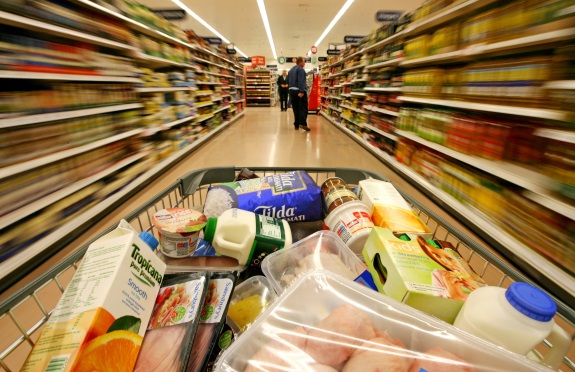
Over 70% of FMCG categories are predetermined before shoppers enter the store. Most of the items bought in supermarkets are already determined by routine before the shopper walks down the aisle. Yet there's a massive opportunity for 28% of the product purchases where impulse purchasing still reigns. The question is, what categories do shoppers engage with instore?
The Nielsen Category Shopping Fundamentals survey shows more people go to the supermarket to buy milk (57%) than any other item. Now you know why Coles launched its massive $1 a litre own brand milk campaign to grab share from Woolworths. Yet milk is one of the least considered decisions shoppers make at point of sale. Over 70% of shoppers aren't engaged by the category in the store.
It's a similar story for pet food and toilet paper. If you're a marketer of these low engagement instore categories you will get a better marketing ROI from a brand advertising campaign or an incentive before people go shopping.
Low engagement products don't benefit well from instore merchandising
Prospects who are less interested in your product instore are best marketed to out of store. From flyers to shopper dockets, catalogues to mobile promotions driving people to the store you will have better impact than attempting to get their attention while on autopilot in your category aisle. Packaging and instore merchadising is also less likely to switch customers between brands than other categories where people are actually paying attention.
However over half the shoppers surveyed are engaged by the process of shopping, just not with every category. So it follows knowing which category a product falls into helps marketers decide where to best invest in marketing.
The high engagement FMCG categories are frozen snacks and desserts
Shoppers are more engaged by more indulgent purchases like frozen desserts (64%) and infrequent purchases like toothbrushes (64%). Here is a snapshot of what shoppers are looking at with their brains switched off versus on:
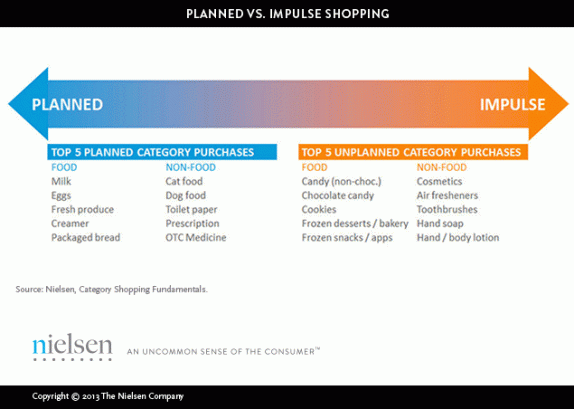
Categories with high engagement are better served by product innovation, instore merchandising and promotions and eye catching packaging.
Our marketing for Pacific West frozen seafood and snacks was centred on creating news and a fresh take on seafood. More adventurous choices has proven to be a more appealing strategy to the predictable product and positioning of Birdseye and I&J. Seven years of year on year growth for Pacific West shows what a difference it makes when you leverage an engaged instore audience.
Read MorePugs & Kisses & Christmas Wishes

(Click to Play)
A sincere thanks to our friends and colleagues for sharing our journey in 2013, UNO’s 13th year growing challenger brands.
We wish you and your family (and all creatures great and small) all the best for 2014.
Once again rather than send cards, we are supporting four koalas through the caring efforts of The Koala Foundation.
Best wishes from the UNO family.
Read MoreAIDS ads that changed our lives: If it's not on, it's not on

Australia faced a big problem in the 80s: AIDS was killing us
In the late 1980s AIDS was spreading unchecked in Australia amongst sexually active adults with multiple partners, homosexual males and intravenous drug users. Most people had no idea how you could catch it and there was no known cure. The only certainty was if you found you had AIDS, it was a death sentence.

The first government advertising campaign to raise awareness of the issue had failed to address the spread of AIDS. While “The Grim Reaper” ads certainly gained attention, the messages had not connected with those at risk and had not changed unsafe sex practices.
Indeed the Grim Reaper had simply scared the general public, especially kids and older people, without offering a compelling safe sex message. In charge of the government's AIDS awareness task force, Ita Buttrose had acknowledged the mistake the Grim Reaper fear campaign had been. The agency responsible that she'd appointed was fired and we were asked to implement our campaign they'd originally passed over for the Reaper.
The creative solution: "next time you go to bed with someone, ask yourself..."
"...how many people are you really going to bed with?"
You can't scare people into doing what's good for them. In fact, it's human nature to reject being told what to do. The art of persuasion often begins with starting a conversation that acknowledges the audience's point of view. And builds from there with an undeniable logic.
This commercial for the first time educated the community it wasn't "other people" who got AIDS, it was potentially anyone who went to bed with someone for unprotected sex.
Shot by Ray Lawrence (who went on to direct Bliss, Lantana and Jindabyne) my AIDS "beds" ad was made before the era of computer generated images. We put 800 real people into 400 real beds in the largest space we could hire in Sydney, the old tobacco bond store in Moore Park. The campaign worked in achieving the brief of raising awareness and driving behaviour change amongst those most at risk. The managers at Ansell would report an uplift in condom sales with every burst of our ads.
It's not often in this business you get the opportunity to really make a difference for society. It's usually baked beans and banking products.
Over three years as lead creative communicator I helped develop a series of undeniable messages that were created for specific audiences. From mass market messages on TV and radio, brochures for distribution in health clinics, English as a second language ads in ethnic press to bus sides and gay street press, posters on beats and stickers on public toilet doors.
The “Beds” ad which asked “next time you go to bed with someone, ask yourself how many are you really having sex with?” gave a graphic explanation of the chain of infection. The “Tell him if it’s not on, it’s not on” ads empowered people to demand their partners wear a condom. On the back of dunny doors in pubs across the country you couldn't ignore the big sticker of a condom clad erect penis with the words: "cover yourself against AIDS"
The outcome: Australia led the world in stopping the spread of AIDS
The integrated advertising campaign successfully raised awareness of AIDS amongst those segments of society most at risk of infection. The messages also reassured those not at risk and transformed the public view from one of “victims of AIDS” to an empowering safe sex message.
The creative campaign was instrumental in educating the public and changing sexual behaviour to succesfully reduce the transmission of the AIDS virus. The leader of Australia's health sector tasked with stemming the epidemic acknowledged the strength of the campaign:
“The message in this war against AIDS is a tough one – we know it will be controversial but we are certain it is the right approach, and it is backed by the World Health Organisation.”
Professor Ron Penny, National AIDS Council, 1988
This AIDS campaign is still recognised around the world as the most effective of it’s kind
Read MoreObstacles to innovation: A jeweller’s tale
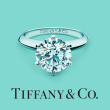
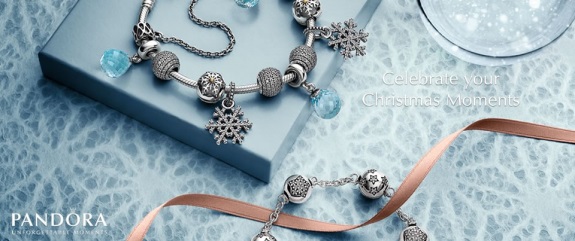
Have you read the retail sector is finally looking up? Unfortunately not for everyone.
A friend of mine is one of Australia’s leading luxury jewellers. This year his turnover is down 20% and the word in the trade is over two dozen high-end jewellers around Sydney are on the brink of closure. That’s a lot in such a niche category. What has served them well for decades has seemingly evaporated overnight.
Where have the sales gone? A few years ago no-one had heard of Pandora as a brand of jewellery. Australia is now Pandora's fouth biggest market in the world. Or have you heard of The Iconic as a place to shop for fashion? Last week The Iconic turned over $1,000,000 of online sales in one day.
The simple answer for retail is to go online, right?
My jeweller’s quandary is he opened an online store with a similar offer to his shop and failed to gain any incremental growth.
Global changes demand an innovative response
It’s not just small high-end jewellers suffering from change. The global super premium brands are suffering the curse of ubiquity, Louis Vuitton sales are plummeting despite the increase in purchases of luxury goods by the emerging Chinese millionaire class.
We are increasingly seeing fashion conscious style setters seeking designs from unknown startups, boutique designers that they can tell friends they’ve discovered. Being in the know has more credibility with peers than wearing what any person with a Platinum card can buy in any Gucci store, from Guangzou to Fifth Avenue, Sydney to Roppongi.
Big brands have difficulty innovating as they have an aversion to cannibalising their existing business. It becomes harder the bigger and more established you are, which fortunately gives Australian challenger brands an advantage. The barriers to innovation have been identified in a Australia wide research by the Australian Institute of Management:
What’s stopping Australian businesses innovating

My friend said he had come across an offshore maker of silver jewellery, gold plated with semi-precious stones that look amazing but only retail for $300 to $500. His fear is if he stocked them no-one would continue to pay $3,000 to $5,000 for his similar looking existing product.
My suggestion to my jeweller friend is to take advantage of his ability to be more nimble than a Tiffany. He isn't facing the number one barrier to innovation, a lengthy development time and there is a way he can try something new with minimal risk. If he quickly sets up a small online store under a different brand, he then has no reputation to lose and can test the appetite for this new product.
The ability to test the mix of product and price is easily done with an online store. I’ve written in the past about how we can learn from fashion retailers that are innovating for pricing advantage.
The study shows the upside to trying new ways by becoming an innovator in your category is huge.
Innovation leaders Vs laggers: business performance ratings.
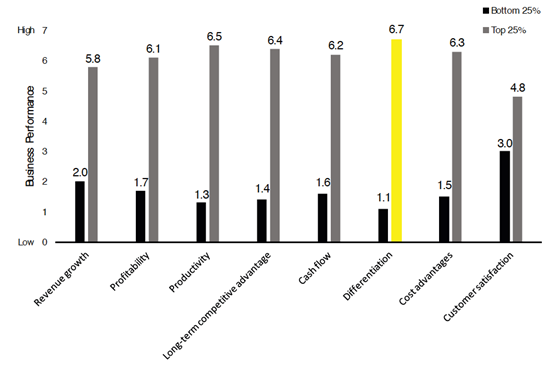
Innovation leaders are two to three times more successful than innovation laggers in terms of growth, profitability, productivity and cash flow. Risk obviously has greater rewards than business as usual. One UNO case study proves the point, Butterfly Silver was the first Australian Jeweller to apply a fashion forward procurement model to become a successful challenger brand.
Source: University of Melbourne and the Australian Institute of Management. 2013
Read MoreSales conversion rates: the facts

Sales call stats – how does your team rate?
48% of sales people NEVER follow up with a prospect.
25% of sales people make a second contact and stop.
12% of sales people only make three contacts and stop.
Only 10% of sales people make more than three contacts with a prospect
So if your sales people are typical of all sales forces, what are the consequences of only 10% of them calling on a prospect more than three times?
Conversion rates increase with sales call rates
2% of sales are made on the first contact.
3% of sales are made on the second contact.
5% of sales are made on the third contact.
10% of sales are made on the fourth contact.
80% of sales are made on the fifth to twelfth contact
Sure, it costs more for your people to call more than 3 times, but consider your return on investment when you factor in the typical conversion rates. Three calls and under only converts 10% of sales!
If your sales people are not following up, the stats indicate there is little to be gained by simply adding new names for them to visit. It also shows the value of building brand awareness before the sales person calls.
Source: Richter10. Thanks to Rick Allen for sharing
Why are most ads so bad nowadays?

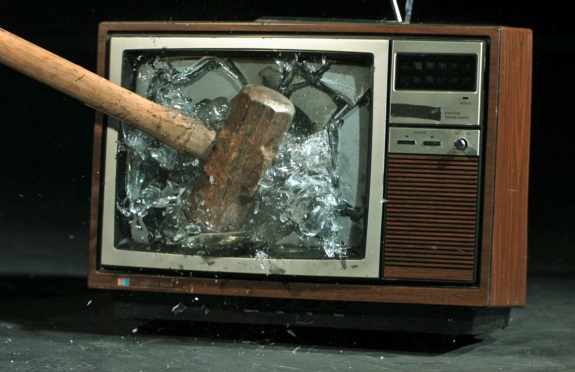
Bartle Bogle Hegarty was the London ad agency every ambitious Australian creative wanted to work at in the 80s. They made a series of great ads for Levis including “laundrette”, came up with "Vorsprung durch Technik" for Audi, "The Lynx Effect" for Unilever and "Keep Walking" for Johnnie Walker whiskey.
BBH creative founder “Sir” John Heggarty will speak at a global advertiser conference in Sydney in March. He has already given an idea of what advice he has to for Australia's advertisers.
What is the state of advertising creativity today?
“It’s one of the best times ever to be in advertising but why is it the work is poor,” he told AdNews from his organic and biodynamic vineyard in France. “I don’t know of any other industry in the world that would say the way to succeed is to make a worse product. And we seem to be in that situation in advertising."
CEOs in Australia say they want creativity
More than anything else, a recent Australia wide survey of CEOs shows they want their marketing agencies to be creative. Yet one look around shows how poor ads are today.
The CEO of a financial services group asked me recently what killed the Australian ad industry? "The Internet?" he asked. "Globalisation" I answered.
The fact is, in Australia the biggest brands mostly run ads from somewhere else. They don’t care if their ads don’t work very well here, in the global scheme of things one year’s revenue in Australia can be surpassed in one long-weekend in Florida.
So I wasn’t surprised to see Sir John identify the cause of mediocre advertising. “You can talk about technology being the reason but for me the biggest issue is the globalisation of our industry. We don’t seem to be able to create work globally that has impact. I think marketers today are losing contact with people despite the fact they have many more ways of communicating with them.”
Meanwhile home grown ad standards are going down, down
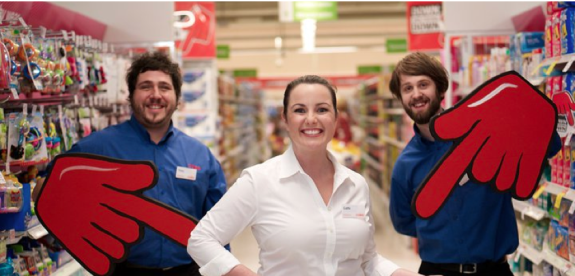
We are increasingly bomdarded with ads produced in-house by Australia's retailers, further driving standards down, down. Over 30 years creating ads has taught me great creativity sells. Especially when developed by local writers and art directors who are in touch with the essence of what makes Australians tick. I believe clients are best served by ads that tap into human insights, no matter how small. When told with humour or compelling gravitas a human truth will cut through where so called big ideas with big budgets and big name stars fail to connect with real customers.
Are you more inclined to buy from someone you like? I know I respond better to brands that have an endearing conversation with me, rather than a list of claims shouted at me, even when put to a jingle. The answer to appealing to customers doesn't lie in more data.
Sir John also warned about the dangers of data and analytics –
“Clients are desperate for salesmanship to be a science. They would love it to be. They would love to be able to say this equals that and this will be the return on investment so let’s do it. But they can’t. In the end it’s a judgment call you still have to make.”
Lets all hope more advertisers re-embrace the power of creative story telling, it makes better viewing.
Read MoreCustomer loyalty in Australia comes at a different price to O.S.

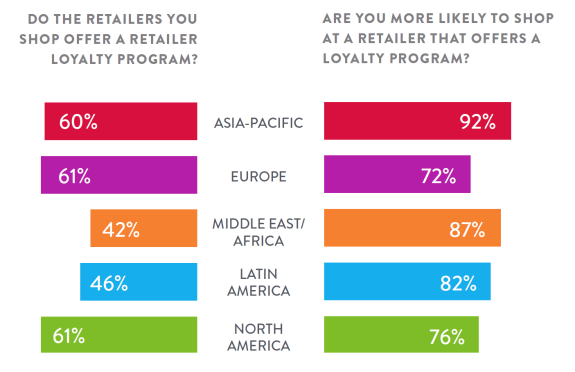
Our region ranks 1st in responsiveness to loyalty programs
We now have proof customers in the Asia-Pacific are the most willing in the world to reward businesses with loyalty. Whether you are in a service or product category, the good news for Australian business managers is your customers' loyalty doesn’t have to come at the price of discounting.
Don’t think global when marketing local
You can out-maneuver big brands that continue applying globally what works in their home market. Consider implementing strategies that Australian customers will reward with loyalty.
The US is introspective, remember it's the country that has a World Series with only US teams. Most US companies don’t have our local market's needs on their radar. Meanwhile, Europe’s big brands are struggling at home with a deflationary market. These parochial management mindsets offer Australian brands an unique opportunity. It's the perfect time to think and act local where big global players have a tendency to universally apply one strategy.
A global survey now shows us just how different Australian consumers are compared to the home town customers of global brands.
The Neilsen Global Report of Loyalty shows our customers are different
Unlike Europe and the US where 82% customers want discounts and free products as a reward, in our region we are less motivated (70%) than anywhere else by something for nothing. Here customers lead the world in valuing good customer service (53%) and exclusive deals (41%). The Customer Loyalty Report shows your customers want you to give them quality and service more than just price:
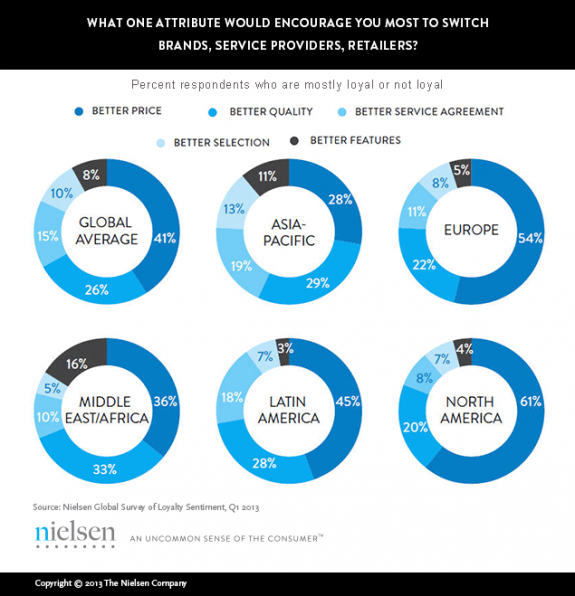
Loyalty programs can improve profits
UNO applied the disciplines of building a loyalty program around quality and service for Vivien's Jewellers. We replaced monthly cardboard in-window price promotions with quality themed creative store merchandising. We introduced a VIP loyalty program that emphasised exclusive product offers. Sales, discounting and price promotions were no longer frequent, being replaced with special occassion sales through invitation-only Wednesday night store openings. While Angus & Coote and Michael Hill were seen to be always on sale, we built a reputation for accessable aspiration.
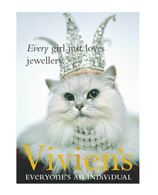
Over 5 years we transformed Vivien's sales base from only 25% repeat sales to 75%. This also helped Vivien's double the number of profitable stores and ultimately sell the business at a category premium.
I continue to encourage our challenger brand clients to compete with the global competition by developing marketing strategies focused on what customers really value. The big guys often lack the ability to get close to the customer, let alone respond. You may have noticed over the last year a number of visiting global FMCG heads lamenting how hard it is for them to make money in the Australian market. Coles and Woolies forcing them to cut margins isn't helping.
Do you cut for share or innovate to grow?
Increasingly businesses nimble enough to canibalise their existing sales by trialing new products or services will gain market share in the long term. And because they aren’t discounting, those sales can be more profitable.
Spend your time looking at ways to make your customers feel understood and then invest in a creative communucation of your differentiated proposition. Let the global brands discount their way to local irrelevance.
Read MoreFrom the people who gave us wooden pillows – brand differentiation

Do you think it’s hard to differentiate in your category?
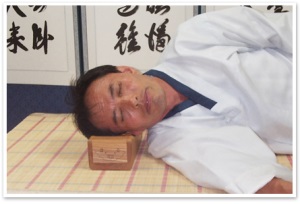 A trip to Japan gave me a fresh perspective on how to make any brand stand apart from the competition.
A trip to Japan gave me a fresh perspective on how to make any brand stand apart from the competition.
Last month I bought a new mattress from David Jones Sydney city store. Each brand had the same proposition: sleep soundly and wake refreshed. Choose between hard or soft, affordable or expensive.
Talk about a lack of fresh ideas, the promise of a good nights sleep hasn’t changed since I worked on the Simons mattress account 30 years ago, or the idea of looking after your back when I marketed Sealy “Posturepedic” 20 years ago.
The Japanese have a strange way of looking at brand propositions
At least on first view this first world nation has some peculiar ideas about brand messaging. The English language isn’t used by 999 out of 1,000. And Japan has a proud history of maintaining thousand year old traditions. So this different background means common products are often promoted in totally different ways to our western approach.
A couple of weeks ago I checked out the merchandising of mattresses in a central Tokyo department store. Here are some pictures I took when the salesman wasn’t looking – mattresses marketed the way Nike sells shoes.
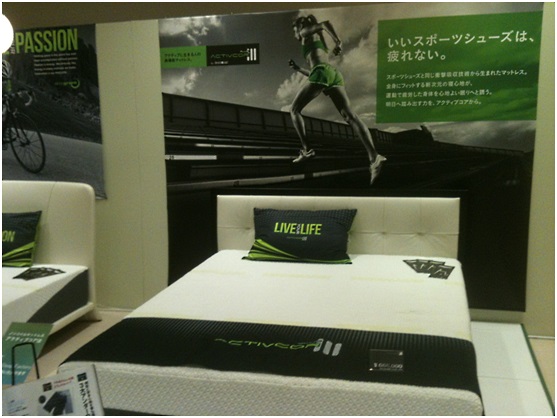

Nothing soft and fluffy about this positioning – “Activor, the next generation in sleep technology.” Hi-tech performance for the modern Japanese consumer.
Feeling inspired? Whatever your category, you can find inspiration from taking a completely different perspective.
P.S. Aussie mattress brand repositions for export market
Local mattress maker A H Beard has just launched in China. Unencumbered by any legacy in this new market, how are they differentiating? Their first mattress for Chinese consumers retails for over $20,000. That should set them apart.
Read MoreVale Scott Kennedy – one of NZ's finest artists
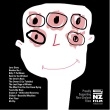
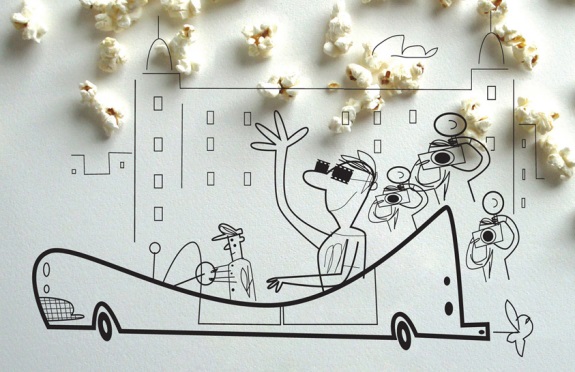
Our professional careers are sometimes touched by the most inspiring personal relationships. I was blessed with the early entry into my life as an Art Director by an artistic genius from across the ditch, Scott Kennedy. It was the early 80s and any Kiwi artist of promise had washed up in Sydney seeking a broader canvas.
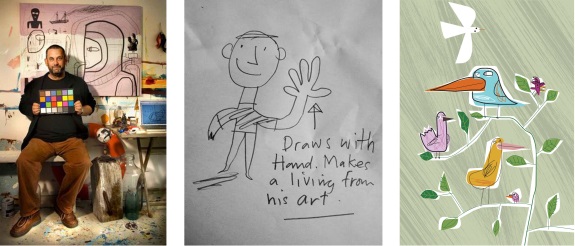
Scott bid us goodbye last week after a painful but defiantly good-humoured fight with cancer. At the end his hands wouldn’t work, but Scott’s creativity was always alive in his one of a kind headspace.

As you can see Scott’s view of life was re-expressed through the lens of 60s cartoon characters and tin toy robots and Dr Strangelove. His ex-US Army dad had relocated the entire family from California to New Zealand in the belief it was the safest place to be when they dropped The Bomb.
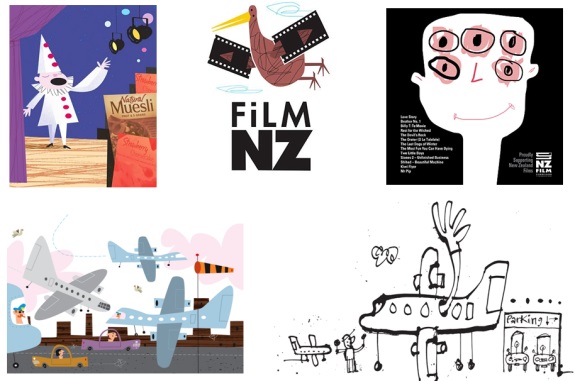
I loved Scott for his quirky humour, big heartedness and child like enthusiasm for new creative possibilities. Have a Captain Cook at Scott’s book covers for the popular How to… series, no surprises which is my favourite.
I write this while wearing Scott's "Joy kills sorrow" T-shirt, which is a fitting memorial to his precious time with us.
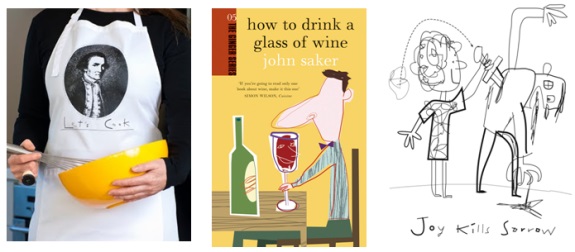
What CEOs want from an agency
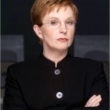
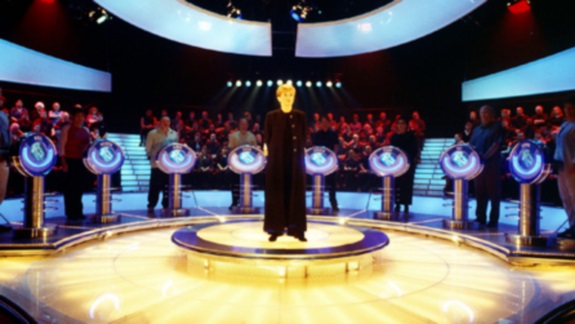
The top 3 things CEOs and CMOs want from their agency according to a survey by the Communications Council are:
1. Innovation and creativity
2. Leadership
3. Integrity
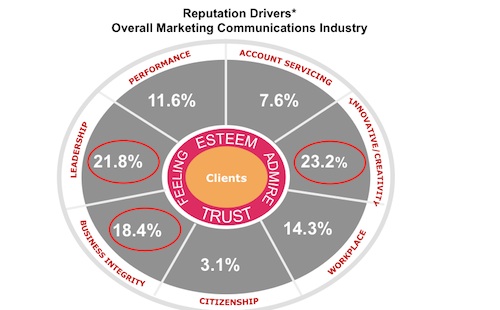
Funnily enough, the leaders of agencies put Leadership last.
Which could explain why three quarters of CEOs don't value marketers at the board level.
I wonder if this is a reflection of the transaction based relationships most agencies seem to be stuck in today. Whatever happened to “fearless advice”. It's what most left brain business managers want from right brain agency creative thinkers. Creative thought leadership is where agencies add value, not servile account management.
Perhaps it’s a consequence of a co-dependent relationship between ignorant brand managers and subservient suppliers. Meanwhile the smart business leaders appreciate the real value to be added is at the board level, with lateral and entrepreneurial advisors from outside their organisation helping them challenge traditional business models.
Read More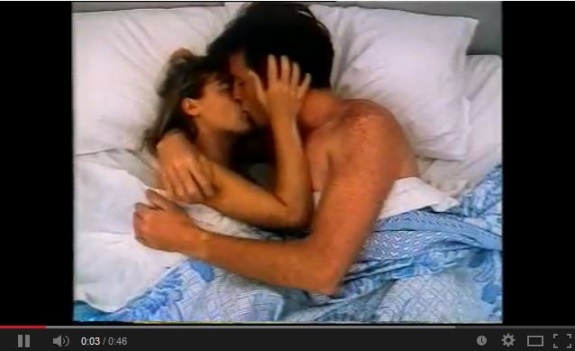
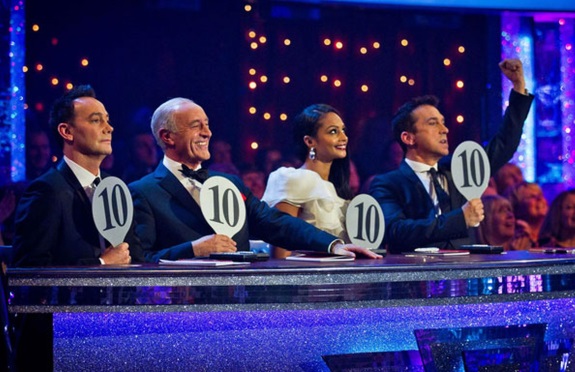



Scan the QR code for our contact details.
Download the Neoreader app.
© COPYRIGHT 2013 UNO marcomms Privacy